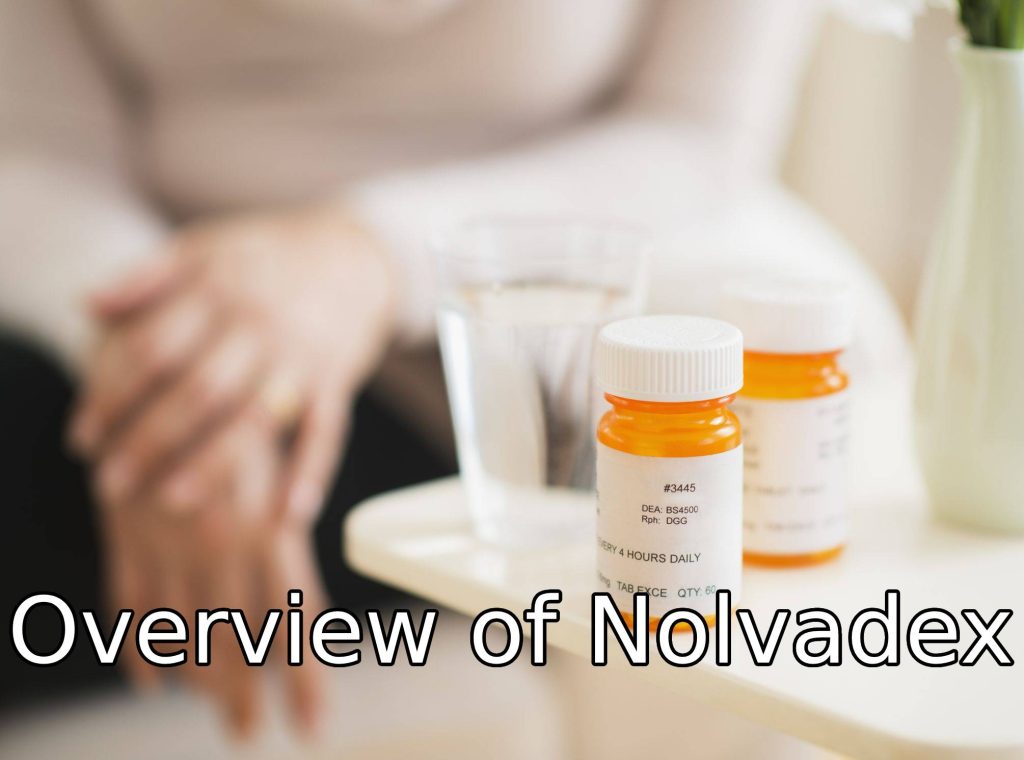Overview of Nolvadex

Tamoxifen citrate, better known by the trade name Nolvadex, is a specific estrogen receptor modulator (SERM). The powerful and effective Nolvadex was developed to fight estrogen in breast cancer patients. Estrogens (female hormones) bind to receptors in the breast and promote the development of tumors. Tamoxifen prevents this binding. The effect on the brain is that tamoxifen prevents the conversion of testosterone to estrogen, so the level of the female hormone remains low.
Nolvadex for men is also used after an anabolic steroid course to stimulate the natural production and increase of testosterone, which has been suppressed due to steroid use.
In this case, Nolvadex stimulates the production of luteinizing hormone (LH) and follicle-stimulating hormone (FSH) in the pituitary gland, which in turn affects the production of testosterone in men. Without LH and FSH, there is no natural testosterone production; LH plays a major role in this process. Because of this effect, Nolvadex is sometimes prescribed to men to treat infertility.
The drug is available in the form of tablets for oral administration. It belongs to the group of cancer drugs that suppress estrogen production. It is a female hormone, but it is also produced in small amounts in the male body. As the amount of such a hormone in the blood can increase during bodybuilding in men, tamoxifen effectively fights disorders.
The main active ingredient is tamoxifen citrate salt. The action is quite strong. The medicine itself can cause side effects, even if used correctly, as indicated in the instructions for use. Therefore, taking such a powerful drug should only take place as directed by a doctor, in some cases – and under his careful supervision. The patient must also strictly superdrol side effects adhere to the dosing regimen. For women and men, it is chosen only on an individual basis, depending on the severity of symptoms and other changes in the body.
Sometimes, along with this medication, the use of aromatase inhibitors is indicated. Only take the medicine as prescribed by your doctor.
See info about nolvadex cycle
Features and benefits of Nolvadex

The main advantage of Nolvadex is its relatively low cost and effectiveness. And it also prevents the development of cardiovascular disease, cancer of the organs of the reproductive system (testicles, prostate).
Nolvadex should only be taken in cases where it is underestimated (that is, to increase the indicators). If testosterone is at a nominal level, it is better to refuse the drug. It must be remembered that this is conditioned on a steroid and does not stimulate testosterone production.
Nolvadex is used:
- in breast / breast cancer (for adjuvant treatment in women with affected lymph nodes, including metastatic breast cancer in women, breast cancer in men);
- with endometrial cancer;
- with anovulatory infertility;
- soft tissue sarcoma cancer;
- pituitary swelling;
- oligospermia;
- helps prevent gynecomastia in men.
The drug can also be used in other solid tumors that are resistant to standard therapies in the presence of estrogen receptor overexpression.
Nolvadex is a potent non-steroidal estrogen antagonist. It may also have partial or full agonistic properties, depending on body tissues and animal species. In humans, there is an anti-estrogenic effect, primarily due to the binding of Nolvadex to the hormone binding domain of the estrogen receptor and the blockade of estradiol.
In the human body, Nolvadex is metabolised in the liver and excreted mainly in bile. The excretion of the parent substance in the urine is very low. The major metabolic pathway for tamoxifen in humans is demethylation to form the active metabolite N-desmethyltamoxifen, followed by N-demethylation to form the metabolite N-desdimethyl.
Application functions of Nolvadex

Patients with estrogen receptor-positive tumors and postmenopausal patients respond best to Nolvadex treatment. Nolvadex should be used with caution in patients with hepatic or renal impairment, diabetes mellitus, a history of tromboembolic events and ophthalmic disorders. In premenopausal women using tamoxifen to treat breast cancer, menstruation may stop.
An increased incidence of endometrial changes, including hyperplasia, polyps, cancer, and uterine sarcoma (primarily malignant mixed Mueller tumors) has been reported in patients treated with Nolvadex. The frequency and nature of these changes suggest that they may be due to the estrogenic effects of Nolvadex. Before starting treatment, and every 6 months thereafter, patients should undergo a gynecological examination. If you experience unusual symptoms (including abnormal vaginal bleeding, menstrual irregularities, vaginal discharge, pain or pelvic pressure), a thorough examination should be performed immediately.
If the patient has a history of liver disease, liver function should be closely monitored. In all patients, the amount of blood cells formed (especially platelets), liver and kidney function, and serum calcium and glucose levels should be determined at regular intervals. In order to be able to detect possible metastases early, it is recommended to periodically perform X-ray examinations of the lungs and bones as well as ultrasound of the liver.
Treatment with Nolvadex increases the risk of venous thromboembolism. This risk is increased in patients with severe obesity, with age, concomitant chemotherapy and other factors for the development of thromboembolic events. For some breast cancer patients who have multiple risk factors for venous thromboembolism, long-term anticoagulant therapy should be considered. If a patient is diagnosed with venous thromboembolism, tamoxifen should be discontinued immediately and antiplatelet therapy initiated.
